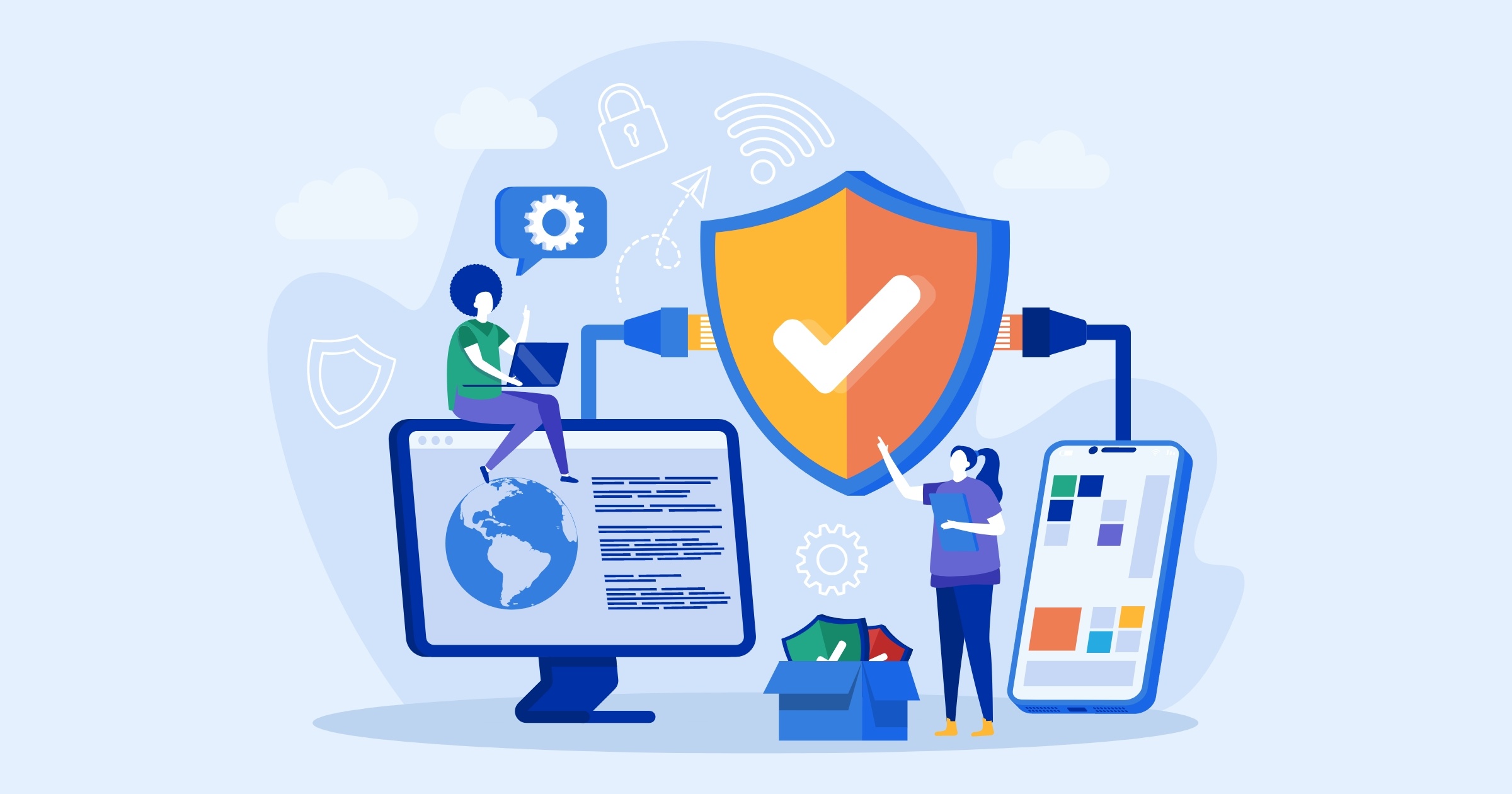In the season two premier of Mad Men, the secretaries at the fictional ad agency Sterling Cooper are seen marveling at a new piece of office equipment – a brand new Xerox machine, roughly the size of a riding lawn mower. One character states in amazement that it’s capable of printing birthday invitations… on colored paper. Business technology has come a long way since the early days of these large machines with limited capabilities.
Even the method of storing business documents has evolved from clunky filing cabinets to a paperless digital system. It can be difficult to stay on top of all the complex terms in today’s digital business environment, especially when it comes to information technology (IT), cybersecurity and information security (infosec). How are these three concepts related and how are they different? Let’s review these common terms to gain a better understanding of how they fit in with your overall vendor management program.
The Basics of Managing an Organization’s and Vendor's Information
At the most basic level, information technology and cybersecurity involve managing digital information. Information security is slightly larger in scope, as it involves managing both print and electronic information. In the business world, this can be anything from an organization’s financial reports and vendor records to its customers’ personally identifiable information (PII).
As nearly every organization relies on third parties for some of its business operations, it’s critical to understand the structure of a vendor’s IT team, as well as its cybersecurity and infosec practices. Each of these areas will have different responsibilities and objectives when handling information.
Here are the commonly recognized definitions for each term:
- Information technology – is most often related to the business use of technology vs personal use. It’s the use of any technology hardware, software, infrastructure and processing system used tin the creation, storage or processing of electronic data.
- Cybersecurity – National Institute of Standards and Technology (NIST) defines cybersecurity as “The process of protecting information by preventing, detecting, and responding to attacks.”
- Information security – is really the practice of protecting information against risk.

How IT Can Support the CIA Information Security Triad
To successfully manage and protect information, it’s important to build a solid foundation of cybersecurity practices. This can be achieved through the concept known as the CIA Information Security Triad.
Let’s take a look at how vendor information technology can support this practice:
- Confidentiality – This refers to the prevention of unauthorized disclosure of information. The role of IT in this area would be to store and transmit information in a secure manner.
- Integrity – This area aims to protect information from be modified without authorization. An IT team can support this goal by maintaining an approval process for data modification.
- Availability – This ensures that authorized personnel can readily access information when needed. An IT professional would be responsible for managing internal systems that store this information, especially when it comes to preventing and handling interruptions or downtime.
Information technology and cybersecurity practices are continuing to evolve at a rapid pace, but the foundational goals of each concept remain consistent. Organizations will always have information to manage and protect, both internally and within their vendor management program.






.gif?width=1920&name=Sample-Graphic-Animation%20(1).gif)




